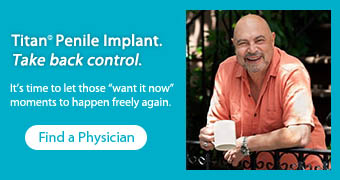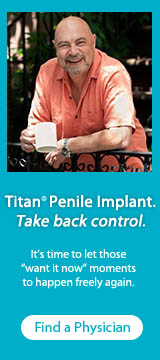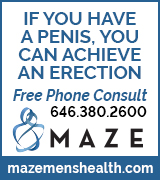Found this thread on a peyronies forum and thought I would post here for discussion:
The question was asked:
Would you please explain the purposes or rear tip extenders and why surgeons use them?
I’m implanted with titan 16+3 rte.
I asked my surgeon why did he choose this option and not 18+1 or 20+0?
Unfortunately, I didn’t get a clear answer.
Most if not all high volume surgeons make it a point to do all they can to either eliminate or reduce the number of RTE's used. At times they will even go to a larger implant and trim down the uninflatable rear portion to avoid RTE's. One reason they are successful at avoiding or minimizing RTE's is that they maintain a large inventory of expensive implants and take several into the OR with them with every surgery.
There are at least 2 reasons, they do what they can to avoid RTE's.
#1 RTE's obviously do not inflate. They are fixed. scar tissue encapsulates the portion of the implant within the body (the crus). the inflated penis is supported much like a small porch flag with a flagpole in a holder, or a fence post in the ground. The penis is supported by the portion of the penis that is internal. In time the scar tissue around the internal base is stretched just slightly. This allows the fixed part to wobble or become less stable. Again, it is much like a fence post in a hole that is just slightly too big. Even a slight enlargement of a post hole causes considerable wobble and movement of the far end of the post. The longer the pole or post the more movement of the far end. ----- If there are no RTE's then this process is greatly minimized. The scar tissue is far less likely to stretch because the inflated part of the implant goes well into the body. When it deflates it takes pressure off of the scar capsule. Next, even if the capsule did slightly enlarge, when you inflate the internal part of the implant it will still fit snugly within the capsule preventing wobble. IE: If the internal part of the implant is inflatable it will snuggly fill the internal scar capsule. If the internal part of the implant is fixed RTE's it will more loosely fill the scar capsule.
#2 The tubes from the reservoir enter the implant at a junction near the rear of the implant. The more RTE's you put on the end of the implant the further forward you move that junction and the tubes that connect to it. This can make hiding the tubes more difficult. In worst case scenarios the tubes can be both visible and palpable in the scrotum or the shaft and can even sometimes be felt by your partner during sex.
Here is an excellent video that shows the contrast of the same man with and without RTE's
https://youtu.be/oGBMccEQERw
RTE's are just one of the factors that determine whether you have an optimal implant. The best surgeons do use them on occasion. They just avoid them and minimize them when they can. Instability or wobble does not prevent intercourse if you are firmly inflated. It can be a functional issue but is largely cosmetic with your erection pointing down rather than up.
Agree? Disagree?
The purpose of RTE's
Re: The purpose of RTE's
I just have one nit to comment on:
#2 The tubes from the reservoir enter the implant at a junction near the rear of the implant.
The reservoir tube goes to the pump and the pump's tubes go to the cylinders,
#2 The tubes from the reservoir enter the implant at a junction near the rear of the implant.
The reservoir tube goes to the pump and the pump's tubes go to the cylinders,
86 years
Inject testosterone weekly.
Implant on 1/22/19 by Dr Avila.
Scrotal, hor. incision just over 1"
18cm AMS 700 CX, 3.5cm RTE 100cc res
Gleason 6 prostate cancer. Monitoring it for now.
Update: On my last biopsies the cancer wasn't found.
Inject testosterone weekly.
Implant on 1/22/19 by Dr Avila.
Scrotal, hor. incision just over 1"
18cm AMS 700 CX, 3.5cm RTE 100cc res
Gleason 6 prostate cancer. Monitoring it for now.
Update: On my last biopsies the cancer wasn't found.
-
Captain1117
- Posts: 386
- Joined: Wed Sep 25, 2019 6:54 pm
Re: The purpose of RTE's
erik821 wrote:Found this thread on a peyronies forum and thought I would post here for discussion:
The question was asked:
Would you please explain the purposes or rear tip extenders and why surgeons use them?
I’m implanted with titan 16+3 rte.
I asked my surgeon why did he choose this option and not 18+1 or 20+0?
Unfortunately, I didn’t get a clear answer.
Most if not all high volume surgeons make it a point to do all they can to either eliminate or reduce the number of RTE's used. At times they will even go to a larger implant and trim down the uninflatable rear portion to avoid RTE's. One reason they are successful at avoiding or minimizing RTE's is that they maintain a large inventory of expensive implants and take several into the OR with them with every surgery.
There are at least 2 reasons, they do what they can to avoid RTE's.
#1 RTE's obviously do not inflate. They are fixed. scar tissue encapsulates the portion of the implant within the body (the crus). the inflated penis is supported much like a small porch flag with a flagpole in a holder, or a fence post in the ground. The penis is supported by the portion of the penis that is internal. In time the scar tissue around the internal base is stretched just slightly. This allows the fixed part to wobble or become less stable. Again, it is much like a fence post in a hole that is just slightly too big. Even a slight enlargement of a post hole causes considerable wobble and movement of the far end of the post. The longer the pole or post the more movement of the far end. ----- If there are no RTE's then this process is greatly minimized. The scar tissue is far less likely to stretch because the inflated part of the implant goes well into the body. When it deflates it takes pressure off of the scar capsule. Next, even if the capsule did slightly enlarge, when you inflate the internal part of the implant it will still fit snugly within the capsule preventing wobble. IE: If the internal part of the implant is inflatable it will snuggly fill the internal scar capsule. If the internal part of the implant is fixed RTE's it will more loosely fill the scar capsule.
#2 The tubes from the reservoir enter the implant at a junction near the rear of the implant. The more RTE's you put on the end of the implant the further forward you move that junction and the tubes that connect to it. This can make hiding the tubes more difficult. In worst case scenarios the tubes can be both visible and palpable in the scrotum or the shaft and can even sometimes be felt by your partner during sex.
Here is an excellent video that shows the contrast of the same man with and without RTE's
https://youtu.be/oGBMccEQERw
RTE's are just one of the factors that determine whether you have an optimal implant. The best surgeons do use them on occasion. They just avoid them and minimize them when they can. Instability or wobble does not prevent intercourse if you are firmly inflated. It can be a functional issue but is largely cosmetic with your erection pointing down rather than up.
Agree? Disagree?
Thank you for sharing this. Valuable information.
Why do then some surgeons use RTE? Just because they dont have enough size options in their inventory?
" The greatest benefit of an implant is that a man stops thinking about ED."-Dr.Eid
48, healthy, straight, single.ED after turning 40. AMS LGX implanted by Dr.Yonah Krakowski in June 2023.
48, healthy, straight, single.ED after turning 40. AMS LGX implanted by Dr.Yonah Krakowski in June 2023.
Re: The purpose of RTE's
I think you're probably right about inventory.
Also, maybe it makes it easier for the surgeon but not as good for the patient?
Whatever the reason, I wish I didn't have RTEs.
Also, maybe it makes it easier for the surgeon but not as good for the patient?
Whatever the reason, I wish I didn't have RTEs.
86 years
Inject testosterone weekly.
Implant on 1/22/19 by Dr Avila.
Scrotal, hor. incision just over 1"
18cm AMS 700 CX, 3.5cm RTE 100cc res
Gleason 6 prostate cancer. Monitoring it for now.
Update: On my last biopsies the cancer wasn't found.
Inject testosterone weekly.
Implant on 1/22/19 by Dr Avila.
Scrotal, hor. incision just over 1"
18cm AMS 700 CX, 3.5cm RTE 100cc res
Gleason 6 prostate cancer. Monitoring it for now.
Update: On my last biopsies the cancer wasn't found.
Re: The purpose of RTE's
tomas1 wrote:I think you're probably right about inventory.
Also, maybe it makes it easier for the surgeon but not as good for the patient?
Whatever the reason, I wish I didn't have RTEs.
Whether or not your surgeon uses RTEs in your case primarily depends upon getting optimal placement of the pump in your scrotum. Everybody's situation depth-wise is different. According to Dr. Kramer, that's why I received 3cm RTEs...he said that in my particular situation, he wanted to maximize my sizing w/o placing my pump too high. Regardless, the pump is perfectly situated & I have no wobble/hinging etc...no complaints whatsoever. Gained an inch through cycling within the first six months or so (6.5 inches fully pumped, 5.5 flaccid/stretched).
...69 years old, married over 30 years, serious ED for around 10 years. AMS 700 LGX 21 cm +3 cm RTE implanted by Dr. Andrew Kramer on Dec 7, 2016.
Re: The purpose of RTE's
Same condition as CCrider. I have a 5cm RTE. Have no problem with it. solids a rock when pumped. Inflatable section hangs nicely from it when flaccid.
82, good health, RP 7-2017, all nerves taken , PSA 0.05, 4-18,, .07 1/19,.05 4/19, .03 11-21, .04 11-23, implanted 4-1-18, Infra-pubic, AMS lgx 15 cm with 5cm rte. Implant at USC Keck. Dr Boyd and Dr Loh Doyle 6.5 x 5, 800 AUS 7-21-20
Who is online
Users browsing this forum: No registered users and 199 guests






